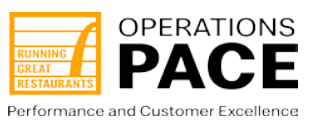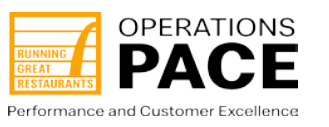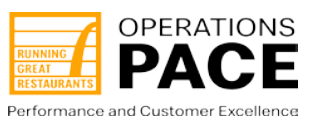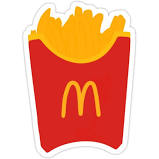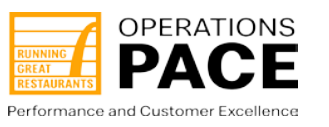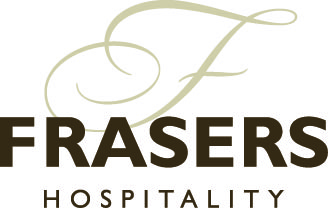Title Page
-
Conducted on
-
Prepared by
-
Location
CRITICAL FOOD SAFETY
FS1-US
-
Is the restaurant free of a pest infestation and/or signs of an active pest infestation in the restaurant building, adjoining corral, and any area within 10 feet of the building?
-
Select reason
- Inside the restaurant has visible infestation
- Inside the restaurant shows signs of infestation
- Outside the restaurant has visible infestation
- Outside the restaurant shows signs of infestation
- Un-trapped live rodent(s)
- Live cockroach(es)
- Rodent droppings
- Other
FS2-US
-
Product name:
-
Are the internal temperatures of beef patties after cooking at or above 155°F?
-
Select reason
- Temperature settings and cooking timers are not set correctly
- Maximum run size exceeded
- Patties not laid and removed in the proper sequence
- Release sheets are not in good condition or not tightly placed on the platen
- Release sheets are not squeegeed between every run and wiped off with a grill cloth at least four times every hour
- Patties not solidly frozen or shows signs of thawing
- Grill is not in good repair
- Other
FS3-US
-
Product name
-
Are the internal temperatures of chicken products after cooking at or above 165°F?
-
Select reason
- Temperature settings and cooking timers are not set correctly
- Maximum run size exceeded
- Proper fryer baskets not being used or are overfilled
- Oil levels in fryers are not correct
- Portions not solidly frozen or shows signs of thawing
- Fryer is not in good repair
- Other
FS4-US
-
Are the internal temperatures of Filet-O-Fish portions after cooking are at or above 155°F?
-
Select reason
- Temperature settings and cooking timers are not set correctly
- Maximum run size exceeded
- Proper fryer baskets not being used or are overfilled
- Oil levels in fryers are not correct
- Portions not solidly frozen or shows signs of thawing
- Fryer is not in good repair
- Other
FS5-US
-
Product name
-
Are the internal temperatures of breakfast steak and breakfast sausage after cooking at or above 155°F?
-
Select reason
- Temperature settings and cooking timers are not set correctly
- Maximum run size exceeded
- Patties not laid and removed in the proper sequence
- Release sheets are not in good condition or not tightly placed on platen
- Release sheets are not squeegeed between every run and wiped off with a grill cloth at least four times every hour
- Patties not solidly frozen or shows signs of thawing
- Grill is not in good repair
- Other
FS6-US
-
Are the internal temperatures of round eggs after cooking at or above 155°F?
-
Select reason
- Temperature settings and cooking timers are not set correctly
- Eggs not laid and removed in the proper sequence
- Egg ring not positioned properly on the grill surface or egg cooker not level on the floor
- Improper amount of water is poured into the center of the egg ring or timer is not started immediately after pouring the water
- Egg ring or egg cooker is not in good repair
- Grill is not in good repair
- Other
FS7-US
-
Can managers (or staff assigned to complete the checklist) demonstrate they have been trained on properly completing the procedures on the Food Safety Daily Checklist and can take corrective action? Select 2 or more, as applicable:
-
Select reason
- Pyrometer is not being properly placed in the center of the patties
- Not all the 4:1 patties cooked are checked
- The manager does not know the correct minimum cooking temperature requirement
- The manager does not take proper corrective action when a product is undercooked
- Other
Scored Food Safety
FS8-US
-
Are all Time-Temperature Control for Safety (TCS) refrigerated products in code (within primary shelf-life)? If no, select what product is not in code:
-
Select Reason
- Fresh beef
- Produce
- Cheese / Eggs / Dairy
- Canadian bacon
- Apple Slices
- Milk
- Shake / Sundae mix
- ⃝Other
FS9-US
-
Handwashing sinks:<br>Is there warm running water and required supplies at all handwashing sinks? Are hand washing sinks easily accessed by employees and only used for hand washing, not preparing food, or storing equipment?
-
Select Reason
- Hand washing sink knobs/automatic tap not working well
- Soap dispenser empty / not working
- No warm running water of at least 100˚F
- No paper towel/working hand dryer
- Hand washing sink/tap obstructed and not accessible
- Hand washing sink used for other purposes
- Other
FS10-US
-
Handwashing procedure:<br>Are hands properly washed at the required times following handwashing procedures? Is there a system in place to ensure hourly hand washing by all employees?
-
Select reason
- Hands not washed on hourly basis
- Hand washing clock / timer not working / not in use / system not in place
- Hand washing activity not monitored
- Hands not washed after using restroom / taking a break
- Hands not washed after handling raw products and working on other station, e.g., prep table
- Hands not washed after tasks (i.e. handling waste, cell phone usage, touching face, hair, picking items off floor, etc.)
- Proper hand washing procedure not followed
- Other
FS11-US
-
Sanitized towel/cloth buckets:<br>Do sanitized towel buckets contain towels and chlorine sanitizer solution at the correct concentration checked with a chlorine test strip?
-
Select reason
- Fresh bucket with sanitized towels not prepared
- Buckets not labeled correctly
- No towels in fresh bucket
- Bucket is soiled
- Sanitizer level is less than 50 ppm
- Test strips not available / damaged / expired / not in usable condition
- Other
FS12-US
-
Sanitizer-soaked towels/cloths:<br>Are sanitizer-soaked towels and grill cloths used at food, beverage preparation, and service areas placed into the soiled towel bucket after using and not left sitting out on surfaces?
-
Select reason
- Grill towels left out on kitchen surfaces
- Cloth towels left out on kitchen surfaces
- Cloth towels left out on beverage/service areas
- Soiled towels mixed with fresh towels in the clean towel bucket
- Other
FS13-US
-
Utensils sanitizing:<br>Are all in-use UHC trays, grill utensils, prep table utensils, and utensil holders clean (no build-up), washed, and sanitized at least every 4 hours as per approved procedure? Do the back sink and soap/sanitizer dispensers or dishwashers function (hot water 110˚F or higher in the wash bin/sink) with all required supplies? Does the sanitizer the solution has the right concentration when checked with an appropriate test strip?
-
Select reason
- UHC trays, utensils, and utensil holders have excessive grease or build-up
- Items are not being cleaned and sanitized every 4 hours
- Back sink dispenser/ware washer not operating properly
- Sanitizer solution not at the correct concentration
- Water at back sink is not 110˚F or hotter
- Test strips not available or damaged/expired/not in usable condition
- Other
FS13-US-01
-
All soiled raw wares that came into contact with fresh beef are washed and sanitized last (unless a ware washer is used). Soiled blue raw beef trays and lids are kept in a blue bus box until cleaned. Back sink is properly sanitized after washing wares that came into contact with raw proteins.
-
Select reason
- Raw ware equipment not cleaned last
- Raw ware equipment not washed separately
- Soiled raw beef tray(s) / lid(s) are not stored in blue bus box
- Back sink / Powersoak sink not cleaned after washing raw ware equipment
- Raw ware equipment is soaking in Powersoak sink
- Other
FS14-US
-
State of cleanliness:<br>Is the restaurant (all areas) in a good state of cleanliness. In all areas, the floors/walls/ceiling and equipment do not have excessive soil, grease, or food debris build-up? Are the floors free of standing or puddling water?
-
Select reason
- Excessive build up of dirt/grease/mold on floors/walls/ceiling
- Excessive build up of dirt/grease/mold on equipment
- Standing/puddling water on the floor
- Other
FS15-US
-
State of repair:<br>Is the restaurant (all areas), the floors/walls/ceilings, and equipment functioning properly and in a good state of repair (not cracked or damaged)? The freezers should not have an excessive buildup of ice.
-
Select reason
- Floors/drains/walls/ceiling not in good repair (e.g. broken/missing tiles)
- In-use food contact equipment/utensils/trays cracked or damaged
- Grease traps in use not functioning properly
- Ice build up in freezer
- Other
FS16-US
-
Water and ice:<br>Are appropriate measures taken to protect water and ice from foreign material, chemicals, and/or bacterial contamination? Are water filters in date and ice machines free from mold or build up?
-
Select reason
- Water filter(s) not dated (if not serviced by Coke)
- Water filter(s) bypassed
- Ice transfer bucket or ice scoop not clean
- Ice scoop not stored in holder
- Water / ice not protected from possible contamination
- Ice machine, bin, or ice chute has visible mold or build up
- Other
FS17-US
-
Food product opened:<br>Are opened packages of food in storage, (including dry storage, refrigerators, and freezers) covered/wrapped, off the floor and away from walls, and stored according to proper procedures? If no, mark what product is not stored properly:
-
Select reason
- Frozen beef
- Fresh beef
- Frozen chicken
- Fish
- Breakfast meats
- Potato products
- Produce / Salad ingredients
- Cheese / Eggs / Dairy
- Raw products are not stored separately from ready-to-eat foods
- Packages of food stored touching the wall/floor
- Packages of food are not covered/wrapped
- Other
FS18-US
-
Raw food product handling:<br>Are blue disposable glove procedures or dedicated tongs used to prevent cross-contamination when handling all raw meat or poultry products (including shell eggs) at the grill station and fryer station? Are dedicated utensils used for raw products (e.g. the yellow yolk breaking tool is only used to break egg yolks)?
-
Select reason
- Gloves not discarded when removed/are being reused
- Double set of gloves being worn
- Proper blue glove procedures for use/removal are not being followed
- Yellow yolk breaking tool not available
- Yellow yolk breaking tool used for items other than raw eggs
- Yellow yolk breaking tool is improperly stored in contact with food or utensils used for cooking food
- Utensils other than yellow yolk breaking tool used to break raw egg yolks
- Dedicated tongs are used for anything other than handling raw protein products
- Bare hands used with raw product at grill / fryer
- Other
FS19-US
-
Ready-to-eat food product handling:<br>Are clear/white disposable gloves worn for food preparation of ready-to-eat foods at the sandwich prep table and salad prep table to prevent bare hand contact with any cooked or ready-to-eat foods?
-
Select reason
- Gloves not worn when preparing sandwiches, salads, or burritos
- Gloves not replaced when damaged / contaminated
- Gloves not discarded when removed or being reused
- Gloves not changed if they become contaminated
- Clear gloves are used for handling raw products
- Double set of gloves being worn
- Other
FS19-US-01
-
Good hygienic practices:<br>Are proper personal hygiene procedures being followed?
-
Select Reason
- Crew hair/beard restraint/cover not used properly
- Manager hair/beard restraint/cover not used properly, where applicable
- Uniforms and/or apron has excessive encrusted buildup
- Excessive jewelry on hands and wrists (more than a smooth ring/wedding band)
- Finger nails are not trimmed, filed and maintained so the edges and surfaces are cleanable and not rough
- False nails, dirty fingernails or nail polish and not wearing intact disposable gloves
- Employees consuming food and/or beverages in food prep areas
- Employees consuming food and/or beverages in service areas
- Other
FS20-US
-
Chemical management:<br>Are chemicals stored away from food and packaging?<br>
-
Select Reason
- Chemical spray bottles / containers stored in the kitchen
- Chemical spray bottles / containers stored in the service area
- Chemicals are stored in dry storage near to food and packaging
- Chemicals stored in food containers
- Chemicals improperly used (ex. spraying around open food or packaging)
- Other
FS21-US
-
Pest management:<br>Is a pest management program and pest prevention steps and behaviors in place and being managed effectively? Is the restaurant properly pest proofed to prevent the entry of pests (e.g. gaps under doors are sealed)?
-
Select Reason
- Pest management program is not in place
- Pest management program is not working effectively
- Restaurant is not pest proofed
- Drive-thru window is not closed when not in active use (and there are no cars in the Drive-thru)
- Report is older than 60 days or no pest service report is available for review.
- Most recent pest control report recommendations not corrected or there is no action plan to correct
- Dead cockroach(es)
- Trapped rodent(s)
- Trailing ant activity in one area
- High large fly activity greater than 5 in one area
- Other
FS22-US
-
Are non-food spill clean-up procedures are in place?
-
Select reason
FS23-US
-
Frozen products:<br>Are walk-in freezers and any other primary storage freezers operating at 0°F or below? Are secondary storage<br>freezers keeping all products solidly frozen? If no, check which units are not at proper temperature:
-
Select reason
- Walk-in freezer or other primary storage freezer is above 0°F and the unit is not in defrost
- Walk-in freezer or other primary storage freezer is above 10°F even if the unit is in defrost.
- Product is not solidly frozen in two-door reach-in freezer
- Product is not solidly frozen in grill side reach-in freezer
- Product is not solidly frozen in wall-mounted freezer
- Product is not solidly frozen in any other unlisted secondary/reach-in freezer
FS24-US
-
Refrigerated products:<br>Are refrigerated products inside all refrigerated units at or below 40°F (including shake/sundae reservoir)? If no, note<br>which units do not meet the temperature standard:
-
Select Reason
- Walk-in refrigerator
- Prep Table refrigerator
- Pass-through prep line refrigerator
- Two-drawer grill side refrigerator
- Service area refrigerator
- Shake / Sundae Machine
- Blended Ice Machine
- Any other unlisted secondary/reach-in refrigerator
FS25-US
-
Are secondary shelf lives of all Time-Temperature Control for Safety (TCS) products held at room temperature and in refrigerators properly marked and within their secondary shelf lives? If no, mark what product is not in code.
-
Select Reason
- Produce held at the prep table or chilled rail
- Cheese / Eggs / Dairy
- Canadian bacon
- Apple slices/butter pats at room temperature or chill pans
- Product held in refrigerators are not properly marked
- Product held in refrigerators not within proper secondary shelf life
- Other
FS26-US
-
Leftover heated foods:<br>Are leftover heated foods discarded (including any shake/sundae mix removed from heat treatment shake/sundae machines)? If no, mark what product:
-
Select reason
FS26-US-01
-
Hot holding units:<br>Are heated foods in a hot holding unit at or above 140 °F? If no, select which product(s), which type of hot holding unit(s) (UHC, Marinator, Extended Hot Holding Cabinet, etc.), and if the products are being held without a timing mechanism
-
Select reason
- Products held without a timing mechanism
- Breakfast meats
- Egg products
- Beef patties
- Fried chicken products
- Fried fish products
- Hot cakes
- Marinator
- Extended Hot Holding Cabinet
- Other (e.g., sausage gravy, limited time offer (LTO) protein products and/or sauces)
FS27-US
-
Pyrometer:<br>Is the Pyrometer calibrated, working correctly, and is the probe clean?
-
Select reason
FS28-US
-
Sourcing:<br>Are all food, food packaging, equipment (including utensils), and cleaning chemicals from approved sources?
-
Select reason
FS29-US
-
Employee health:<br>Do managers understand employee illness symptoms and reportable illness causes for when an employee cannot be working? Do managers also understand when an employee can return to work after illness?
-
Select reason
- Manager does not know what symptoms (at a minimum, vomiting, diarrhea and jaundice) would result in employees not being allowed to work
- Manager does not know the procedures to follow when presented with an ill employee
- Manager does not know when an ill employee would be allowed to return to work
- Manager does not know the reportable illness causes
- Employee(s) are observed exhibiting any of the reportable illness symptoms
- Other
FS30-US
-
Staff training:<br>Are all managers (including shift managers) trained and currently certified in food safety through ServSafe (or an equivalent and accredited food safety training course)? Are all employees trained and verified on food safety and sanitation per McDonald's current training program?
-
Select reason
- Certification date is not current
- Certification for managers not issued by ServSafe or equivalent/accredited organization
- Certification records for all managers not available for review during the visit
- Employee training tracking document not available for review during the visit
- Not all employees have been trained and verified
- Other
FS31-US
-
Food Safety Checklists:<br>Are at least the last 60 days of correctly completed Food Safety Daily Checklists available? Are the last two correctly completed Monthly Food Safety Procedure Verifications available? (For Digital Food Safety please reference the Food Safety Guide)
-
Select reason
- 3 or more missing required sections or days within the 14 days record review
- 12 or more missing required sections or days within the 60 days record spot check
- Daily Food Safety Book (records) not available
- Last two completed Monthly Food Safety Procedure Verifications are not available
- Digital Food Safety less than 80% completion for the last 60 days of Food Safety Daily Checklists
- Other
FS32-US
-
Health Department Inspections:<br>When reviewing the most recent health department inspection report, have all critical food safety violations noted by the health department been corrected or a plan in place to correct issues?
-
Select reason
FS33-US
-
Allergen management:<br>Are nut containing McFlurry mix-ins kept in the orange container with lid and a dedicated scoop?
-
Select reason
Sign Off
-
Name and Signature
-
Notes: Critical Food Safety questions are highlighted in RED. If not compliant, these questions result in visits automatically not meeting standards and must be corrected immediately with auditor agreement to remove the risk before leaving the premises. A follow up visit is required within 14 days.
If the overall score is below 80%, the visit results in not meeting standards, and a follow-up is required between 30 - 90 days. Food Safety Review Guide is available for this section.






